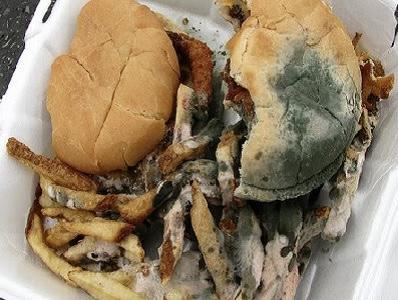
U.S. school kids, hospital patients, and prison inmates share food poisoning, while food liquidators boast they turn “trash into treasure.”
[This article is the second part of a series on human rights abuse by the U.S. Federal Bureau of Prisons (BOP) and the Miami Federal Detention Center (Miami FDC). Part One was on its deadly lack of health care services. Part Two is about its torturous and corrupt food service industry. In violation of international human rights, the U.S. prison system fails to provide inmates with “wholesome and adequate food,” as specified in the United Nations’ Human Rights and Prisons: A Pocketbook of International Human Rights Standards for Prison Officials.—Editors]
Operating in the shadows is easy in the United States secondary food market, as few question what happens to food that exceeds its expiration date in leading supermarket chains across the nation. Well, truth be told, expired food gets reprocessed, repackaged, relabeled, and resold to institutions, discount retailers and restaurants.
With scant regulations in place for repurposed food, and institutional purchasing specifications silent, food liquidators underbid their competitors and win contracts nearly every time. In the secondary food market, you get what you pay for, and never has the saying “garbage in, garbage out” been more appropriate.
No matter how much hot sauce or gravy is added as camouflage, spoiled food products are unfit for human consumption and cause foodborne illness. Here, what you don’t know can kill you.
In its most recent public report posted on its website, the Centers for Disease Control (CDC) estimate that, each year, roughly 1 in 6 Americans (or 48 million people) get sick, 128,000 are hospitalized, and 3,000 die of foodborne diseases. However, “recent” is a misnomer here as the CDC’s report is shamelessly outdated by more than ten years. It was issued in January 2011.
Considering that food poisoning is an embarrassing indicator that reveals in its gory horror the systemic corruption of what turns out to be an unregulated food market, it is highly probable that there was undercounting back in 2011—especially in institutional settings. And it is more than likely that things are even worse in 2022.
When oversight agency reports are no longer published, it is clearly because industry statistics and agency performance metrics do not look good. Cover-ups at the federal level are routinely done by appointing incompetent or industry-compromised agency heads, and by defunding key reporting departments, and reducing analytic staff positions and field inspectors.
Despite oversight agency neglect, both schools and prisons have been independently studied for foodborne illness outbreaks. While these reports/articles are also outdated, their shallow analysis remains current. The accepted prevailing narrative blames foodborne illness outbreaks on food handlers that failed to follow U.S. Department of Agriculture (USDA) protocols for cleanliness and neglected to maintain the proper temperatures for food storage and service.
While not to detract from standards set by the USDA, there are no reports that expose the lethal dangers of the secondary food market. Moreover, unlike the primary food market, these repackaging facilities are not inspected, despite their erroneous claims of USDA or FDA certifications.
A media spokesperson for the U.S. Food and Drug Administration (FDA) explained that “the FDA doesn’t oversee meat and poultry, only dairy products.” And that “expiration dates are not regulated, only food safety.”
This is a double-edged sword. On the one hand, food that is spoiled, contaminated, or toxic but within its expiration date is unquestionably unfit for human consumption. On the other hand, expiration dates are necessary as packaging, coloring and processing conceal food quality from consumers, as well as purchasing agents and food handlers.
When a food product’s expiration date is concealed by repackaging and relabeling, all food safety bets are off. The reselling of expired food is a black market in broad daylight.
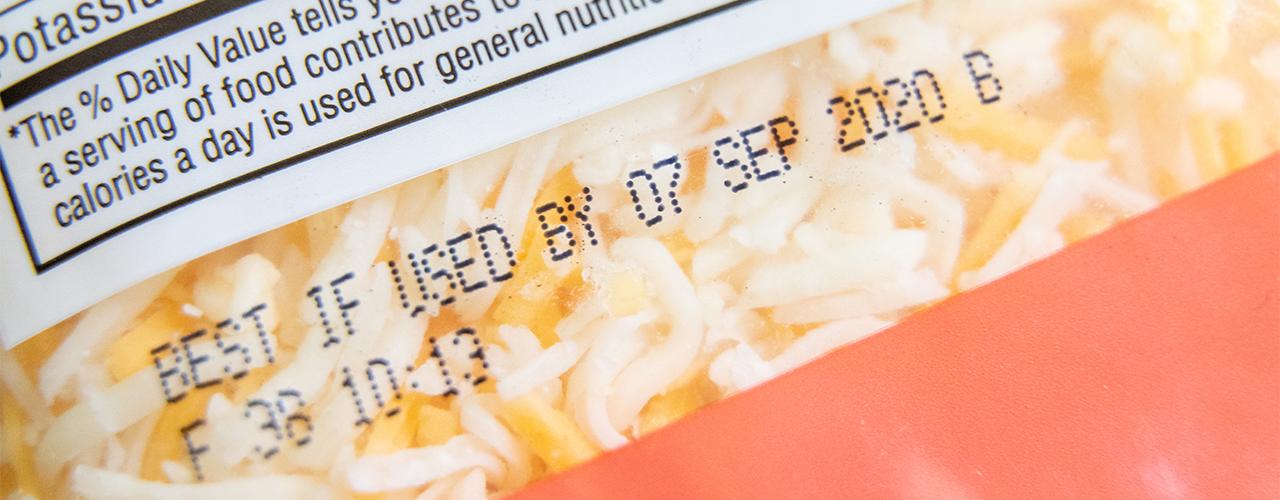
Most individuals interviewed at the BOP for this article were not familiar with the existence of the secondary food market. Interviews included procurement personnel, a dietitian, an attorney, a policy analyst, and two media representatives. Only the National Food Service Administrator (NFSA) understood that, when bid specifications are silent on this fundamental go/no go criterion, food vendors selling fresh primary market products cannot compete fairly against secondary market expired food liquidators.
Undeniably, recycled food has a lower price point than fresh food. Thus, secondary food liquidators can dominate the market by selling inferior products.
Within this context, rigged specifications may be considered a form of procurement fraud. Publicizing bid tabulations for the lowest three bidders would level the playing field.
Value and Shelf Life
However, in procurement, value and shelf life need to be decision-making factors, as well as the acquisition cost. For example, if cafeteria meals make school children, hospitalized patients, and prison inmates sick and perishable food products are being thrown out prematurely—because their shelf life was already compromised prior to delivery—the initial cost savings is immaterial.
Further, any acquisition cost savings realized in purchasing food from the secondary market is dwarfed by incidences of foodborne illnesses. Symptoms of food poisoning require costly medical attention, result in higher staff absences and increased overtime for alternate staff, and increase cleaning costs to manage uncontrolled bodily fluids.
Additionally, foodborne illnesses bring psychological stress to all involved—especially when there is a significant outbreak. According to the CDC, a foodborne illness outbreak in prison affects, on average, 60 inmates.
One complaint shared in nearly all prison riots is the quality and quantity of subsistence food. Riots are dangerous to inmates and correction officers, expensive to taxpayers, and can significantly damage facilities. In Texas, inmates set a jail ablaze in 2009, and in Michigan, a 2017 riot cost taxpayers nearly one million dollars.

When asked why BOP’s national bid documents do not specify that food is purchased fresh from the primary food market, BOP’s NSFA explained that “this requirement is left up to each facility’s discretion.”
However, research showed that BOP headquarters sets bid specification standards, and these standards are replicated downstream. Local procurement staff do not reinvent base specifications.
After reviewing multiple national BOP and Miami FDC bid solicitations on SAM.gov and Unison Marketplace, it was confirmed that “New Food” specifications are utterly absent. Specifications set by headquarters and replicated at the local level only require that kitchen equipment be “New” as detailed below:
“New Equipment ONLY; NO remanufactured or ‘gray market’ items. All items must be covered by the manufacturer’s warranty.”
Based on this research, institutional specifications could require:
New Food ONLY; NO repackaged or reconditioned “secondary market” food items.
The specification that “Manufacturer’s letters will NOT be accepted in lieu of labeling” sounds good at face value. However, what is the point of a label if its only purpose is to hide the fact that expired food was reconditioned and repackaged?
Reporting “Problems with Food”
Presently, consumers can report “a problem with food” at “restaurants,” or they can report a rotten “egg,” etc., on the FoodSafety.gov website or on the U.S. Food Safety and Inspection Service (FSIS) webpage. However, evidence is required, such as the original container or packaging. This information is not readily available in institutional settings as most subsistence meals are devoid of their original packaging. It appears, by design, there is intentionally no place to report unsafe institutional food.
Recommendations are made on the FoodSafety.gov website to contact local health departments to report foodborne illnesses. However, in the case of federal prisons, no oversight authority inspects its kitchens.
A cornered representative from BOP’s press office reluctantly admitted their kitchens are only inspected by BOP personnel but countered this unsavory news with the fact that there is a “food safety manual.” Unfortunately, the manual, like BOP’s procurement process, is full of holes but more about that later.

Problems with Administrators, Oversight Authorities, and Elected Officials
Personal negligence and corruption are revealed when elected officials refuse to ask agency administrators hard questions or demand reports that enable meaningful analysis. Reports from agencies that provide services such BOP, as well as oversight authorities such as the FDA, USDA, U.S. Department of Health and Human Services (HHS), and the CDC are essential for a functional government that is answerable to its constituents (taxpayers and not just lobbyists).
The revolving door between industry and regulatory authority personnel is well documented, as is the negative impact on democracy that industry lobbyists hold over elected officials. And let’s not forget how donations by “charitable” organizations are used not only to achieve tax evasion but to push agendas that serve their principals’ profitable business ventures.
Not only has this trifecta of foul play led to agency capture and the outright abandonment of taxpayer rights and consumer protections, but it violates international human rights law. The United Nations’ Pocketbook of International Human Rights Standards for Prison Officials requires “wholesome and adequate food” be provided to the incarcerated.

Lack of Indicators that Measure Performance in Institutions and Oversight Authorities
If they exist, indicators that reveal operational issues, measure performance, and provide a cost/benefit analysis in institutions and their oversight authorities are often concealed and require Freedom of Information Act (FOIA) requests. FOIA requests take months, if not years, to produce and often require lengthy litigation due to agency obstructionist claims that releasing “sensitive” information somehow compromises industry trade secrets, privacy laws, etc.
In BOP, a simple request for a line-item budget and an analysis comparing various prison allocations and expenditures was claimed to compromise its security. It shouldn’t; they don’t. Budget figures given in aggregate that do not drill down to specific medical and food costs are intentionally impossible to analyze, as shown here in the DOJ’s 2023 budget. It only lists “Inmate Care and Programs,” totaling just $3 billion, or 37.5%, from a nearly $8 billion budget.
According to a representative from BOP’s research/policy area, “line-item budgets and comparative facility analytics can be misinterpreted and are rightly protected by FOIA.” So FOIA, in effect, protects the public from learning the truth about high costs, failed programs, mismanagement, and malfeasance. So, are white-collar criminals running the prisons? More about this later.
CDC Reports
Often symptoms of food poisoning such as vomiting, diarrhea, abdominal pain—and flu-like symptoms such as fever, headache, and body-ache—are dismissingly attributed to stomach viruses or influenza by institutional administrators. However, when food poisoning cannot be concealed due to a large number of students or inmates affected, it may be reported to the CDC. Allegedly, the CDC maintains an active Foodborne Outbreak Surveillance System; but it has not issued a report since 2017.
Its 2017 report indicates that only eight outbreaks of foodborne illness occurred in schools and on average 31 students were affected, with the total number of cases at 253. Additionally, it revealed that only twelve cases of foodborne illness occurred in jails/prisons and on average 60 inmates were affected, for a total of 724 cases.
As foodborne illness is more easily reported when it occurs in restaurants, as explained in the section titled Problems with Food, it is dominant in the CDC’s analysis. But on average, a restaurant outbreak only affects ten patrons (which is still terrible in its own right). Also, restaurant patrons are not captive customers. They can elect not to return to a restaurant, whereas students, hospital patients and inmates are dependent on institutional cafeteria food for sustenance.
Secondary Food Market
Yes, there are many ways to contract food poisoning in any kitchen by unclean conditions and the food handlers’ failure to observe USDA/FDA protocols, but the probability of illness is increased exponentially when food products are delivered already expired.
Also, repackaging temperature changes, more staff and equipment handling, and re-exposure to air additionally compromise the already marginal shelf life of these highly perishable food products. Modifications that hide the identity of expired poultry, beef, pork and fish, such as grinding these products into hot dogs, beef patties, sausages, chicken nuggets and fish sticks are gross—as is turning expired milk and eggs into dehydrated/powdered products. It is disgusting to know that these food products are routinely sold to institutions and restaurants nationally.
According to the USDA media representatives, the USDA’s FSIS does not inspect secondary food processing facilities. Therefore, repackaging facilities that advertise they have FDA and USDA certifications misrepresent themselves. However, most secondary food market liquidators do not have websites or list principals. This omission allows LLCs to form and dissolve easily when their contractual performance issues become so severe that their principals are debarred from bidding on government contracts.
Green Eggs and Ham/Cat in the Hat
One major subsistence food service provider with Miami FDC is named Wholesome Food Products, LLC. It has no website and lists no principals. In what is believed to be a tribute to Dr. Seuss, it is comprised of two mysterious LLCs named, Thing1. LLC and Thing2. LLC.

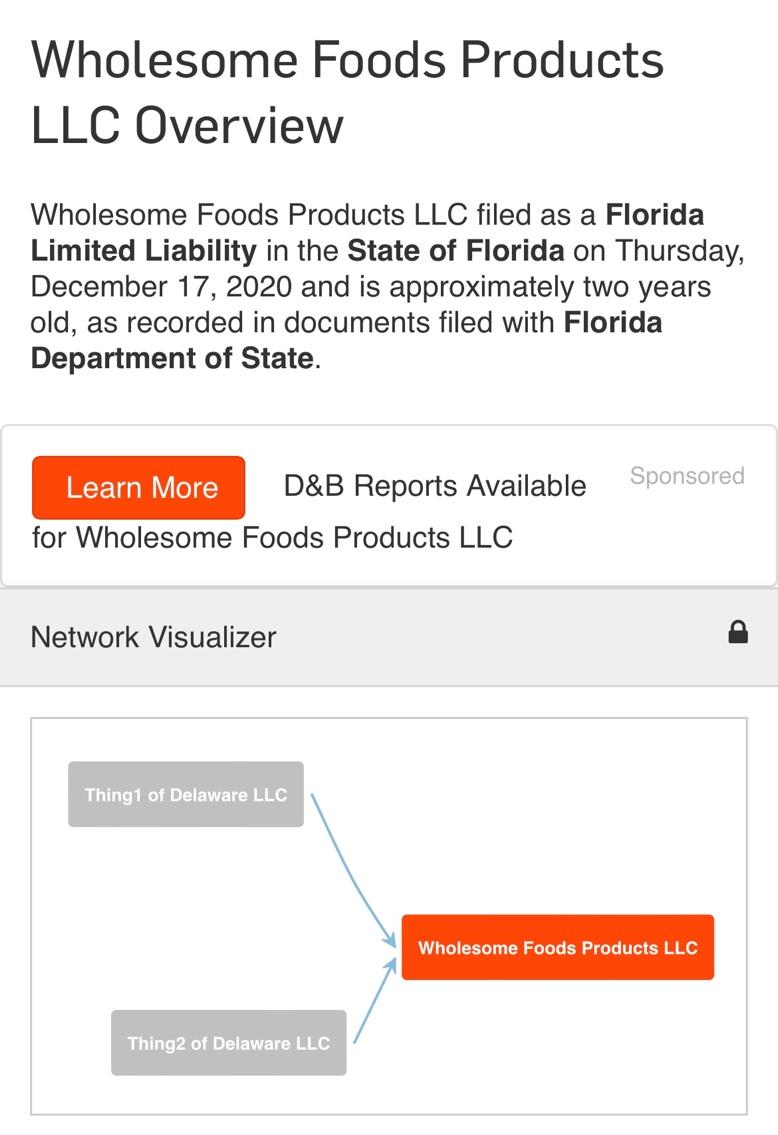
Consider that there is no limit to the secondary market’s reselling capabilities. Expired food products travel a conga line until the liquidator finds a buyer so desperate, inept, or corrupt that it will purchase anything. For example, food rejected by restaurants and discount stores can be sold to schools. Food rejected by schools can be sold to hospitals and prisons. Finally, when prisons reject the delivery, it is sold to the military. Consider that every delivery and site inspection affects temperature and deducts time from expired products’ shelf life. Unquestionably, both factors further reduce product safety.
A former sailor stationed aboard the aircraft carrier Kitty Hawk in the Persian Gulf during Operation Enduring Freedom reported that a food delivery contained beef stamped with REJECTED DOC (Department of Corrections). Still, the kitchen staff was ordered to cook and serve it because there was “a ship full of sailors and not enough food to last them until the next delivery.”
In prisons, food handlers who complain about serving meals that are not fit for human consumption are disciplined, relocated or fired.
“They had about 100 bags of rotten potatoes,” Pine said. “You could smell them,” and “they had black and green mold all over them.”
“They told me I was trying to start a riot,” Pine said. “I said: ‘No, you’re serving rotten potatoes. That’s going to get to the yard.”

BOP’s Food Safety Manual
The BOP’s Food Safety Manual does not follow USDA basic protocols which are based on fresh food procured from the primary food market and processed by facilities under FSIS inspections.
As discussed in the section titled Secondary Food Market, repurposed and reprocessed foods are not inspected by the USDA/FSIS and have a shorter shelf life. This results in the inevitable serving of spoiled food and beverages—even when its manual’s recommended storage time duration and temperatures are precisely followed.
BOP’s manual instructs staff that food storage must be limited to a maximum of “5 days or the manufacturers’ use by date.” Since the food is not in the manufacturers’ packaging, this “use by date” requirement is merely window dressing. Five days for fresh food is too long, according to the USDA for poultry and seafood, which specifies one to two days of storage before cooking or freezing and refrigeration for three to four days after cooking for all foods.
The below-listed paragraph is from the BOP Food Safety Manual, Chapter 10, page 47:
FOOD SAFETY LIMITATION OF GROWTH OF ORGANISMS OF PUBLIC HEALTH CONCERN
“Refrigerated, ready-to-eat, potentially hazardous food prepared and packaged by a USDA-inspected food processing plant [they don’t exist according to USDA and FSIS media spokespersons in the secondary food market], and not offered for immediate service when the original container is opened, or unused portions of these items from any meal, are clearly marked to indicate the date by which the food must be consumed or discarded. The date is based on a 5-day maximum when stored at 41 [degrees], not exceed a manufacturer’s use-by date.” [With frequent rehandling over five days, it is a no-brainer that a 41-degree temperature cannot be maintained.]
The below-listed paragraph is from the USDA’s website:
“Refrigeration slows but does not prevent bacterial growth. Therefore, it’s important to use food in a timely fashion before it spoils or becomes dangerous. For raw ground meats, poultry, seafood, and variety meats (liver, tongue, chitterlings, etc.), refrigerate them only 1 to 2 days before either cooking or freezing. Beef, veal, lamb, and pork roasts, steaks and chops may be kept 3 to 5 days. After cooking, meat, poultry, and seafood can be safely stored in the refrigerator 3 to 4 days.”
The BOP manual instructs staff that their Budget Projection Report should ensure the “contracting specialist purchases supplies at wholesale and other favorable prices and conditions.” Quality and shelf life are not considered when setting up a food order.
Another issue with the manual is its failure to require that temperature logs be kept. This omission is suspiciously bad since temperature taking is the only way it directs potentially hazardous food to be checked. Additionally, logs more easily enable problem food liquidators to be disqualified from bidding.
The below-shown paragraph is from the BOP Food Safety Manual, Chapter 7, pages 35 and 36:
“Temperature of potentially hazardous food is checked when it is received. Items impractical for probe temperature monitoring (eggs, milk, etc.) are determined to be in compliance by monitoring the temperature of the transport container. Immediate notification is made to the FSA, AFSA, or designee to determine disposition of any item not within the limits described below. Due to the immediate notification and disposition requirements, logs documenting receiving temperatures are not required.”
Oddly, there is no requirement in the BOP manual for a written report to “the FSA, AFSA, or designee.” Tracking what happens to rejected prison food is essential to thwart an even more sinister black market comprised of rejected food (one step down from expired food)—as evidenced by the Kitty Hawk aircraft carrier receiving beef marked REJECTED by the DOC.
Corruption in Prison Food Procurement
While most of the articles involving corruption in Miami FDC involve assault, rape and the smuggling of contraband, state-run and privately run facilities describe the mechanics of crime in food procurement. Bid specifications that eliminate primary market competition combined with manuals that allow expired and spoiled food items to be accepted by food handlers and that do not track rejected food create an environment ripe for kickbacks, bribes, and hush money.
However, prosecutions might be more embarrassing for BOP than simple staff dismissals. Moreover, keeping negative information from the public might have a higher value to the U.S. Department of Justice (DOJ)—as its Attorney General is answerable to the president—than preventing and/or prosecuting white-collar criminals.
Consider that the following headline is not good publicity for the facility’s warden: Oregon DOC Food Manager Takes Over $1 Million in Bribes, Feeds Prisoners “Distressed” Food.
According to Prisonlegalnews.org, “between mid-2000 and December 2006, the Food Service Administrator (FSA) ‘supplemented’ his $79,000 annual salary with at least $1,132,000 in bribes and kickbacks from brokers who sold dubious quality food to the ODOC.
Under the FSA’s watch, daily food costs in Oregon’s prison system dropped from $3.95 per prisoner ($1.32 per meal) in 1997 to $2.38 ($0.79 per meal) in 2006—a 40 percent reduction.”
Wardens are evaluated on the cost to shelter inmates, and up-front savings are a more highly valued indicator than foodborne illnesses, which can mostly be swept under the rug or blamed on viruses.
According to the CDC, “Incarcerated people are more likely to have foodborne illness that is related to an outbreak than non-incarcerated people.”
DOJ’s Inspector General released a report dated October 2022 that identifies BOP issues. Granted, violent attacks and contraband make bigger headlines, its silence on white-collar crime involving procurement, foodborne illness, and the secondary food market is deafening, especially when considering the crime ring in Oregon, uncovered by FBI and IRS raids, led to California and Maryland food brokers pleading guilty to bribery and tax fraud. They faced 13 years in prison and a $500,000 fine.
Misusing Health Protocols to Obscure Operational Issues and Inmate Conditions
According to its webpage, Miami FDC has 1,082 inmates and remains under COVID level III protocols, which suspends all visitations. Out of 122 institutions, only three facilities are level III at the time of this writing.
However, its seriously outdated report from September 29, 2021, only lists two inmates in medical isolation. Thus, family members, elected officials and the press cannot physically monitor its operations and inmates’ health for no apparent or documented reason. Corruption grows in secrecy. What is Warden Eugene K. Carlton hiding?
A 2021 Associated Press (AP) investigation revealed that the nearly $8 billion annually budgeted to the federal Bureau of Prisons is a hotbed of abuse, graft and corruption. BOP accordingly seems to have turned a blind eye to employees accused of misconduct and, in some cases, the agency failed to suspend officers arrested for crimes.
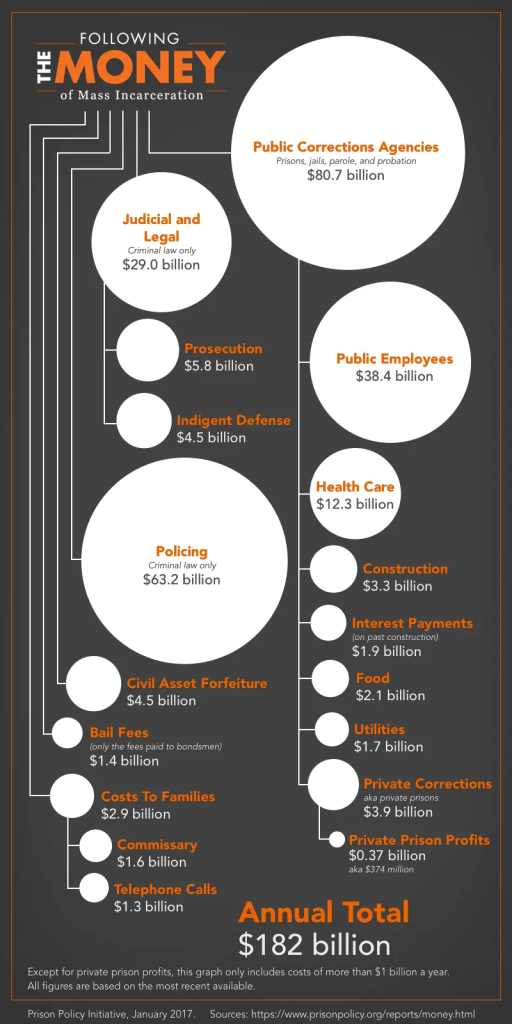
“The main concern with the Bureau of Prisons is that wardens at each institution decide if there’s going to be any disciplinary investigation or not,” said Susan Canales, vice president of the union at FCI Dublin. “Basically, you’re putting the fox in charge of the henhouse.”
Cost to Taxpayers
According to a 2017 report done by prisonpolicy.org, the mass incarceration system costs the government and families of justice-involved people at least $182 billion every year.
Cost to Feed Inmates/Per Capita Budget (COIF)
Reportedly, Miami FDC’s Food Service Department has a per capita budget. But since this document combines food items with equipment and cleaning products, it makes isolating food costs difficult. This budget is also not available without FOIA. The DOJ’s 2021 report has no useful indicators for comparing food cost or illness by facility.
Prisonpolicy.org research indicates that, in 2003, Florida prisoners’ daily food cost was $2.32. This is a nominal fraction of the annual Cost of Incarceration Fee (COIF).
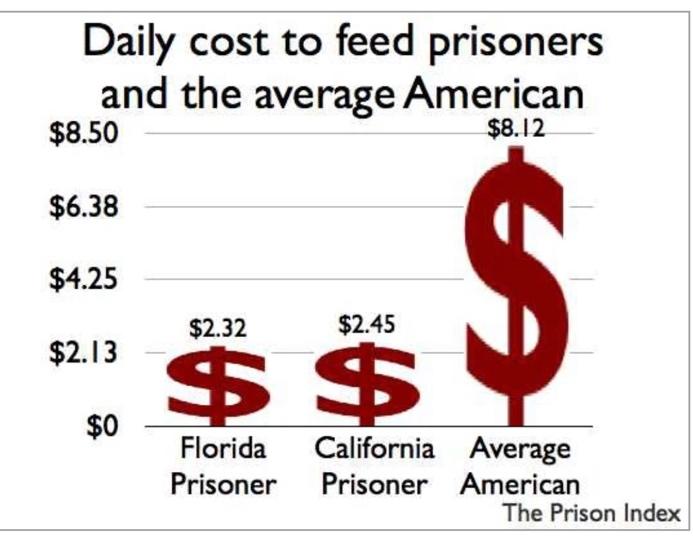
According to a report in the Federal Register that is based on FY 2020 data, the average annual COIF for a federal inmate in a federal facility in FY 2020 was $39,158 ($107.28 per day).
Commissary
Despite a nearly $40,000 annual cost to taxpayers, inmates at Miami FDC spend up to $360.00 per month ($4,320 per year) on items such as sodas, ice cream, food, clothing, electronics, and shoes at the commissary. Commissary vendors rake in $1.6 billion a year, according to a 2016 study done by the Prison Policy Initiative. Are subsistence foods compromised to promote the use of this lucrative market?
Claims by Liquidators
Advertising claims by liquidators are unappetizing.
Lewisco Holdings
“When food reaches its expiration date, it becomes worthless, right? Not so fast, says Lewisco Holdings. As buyers of expired food inventory, we can take your trash and make it treasure. Liquidation is the process of buying unusable goods, clearing them out of the primary market, and moving them into secondary lines of distribution. Lewisco Holdings operates in the realm of expired food inventory. We purchase these goods and then distribute them to discrete buyers throughout the continental U.S.
As liquidators, Lewisco Holdings does not sell to restaurants, convenience stores, primary supermarkets, or full-line distributors. These entities are our clients’ customers, and we respect the boundary. We also pledge to work with confidentiality—not advertising, not selling to buyers outside the geographic boundaries, and not selling to any buyer who doesn’t also respect these rules.
Examples of our typical buyer include:
- Deep-discount salvage stores
- Small, privately-owned grocers
- Community food banks
- Correctional facilities
- Schools
- Farmers’ markets
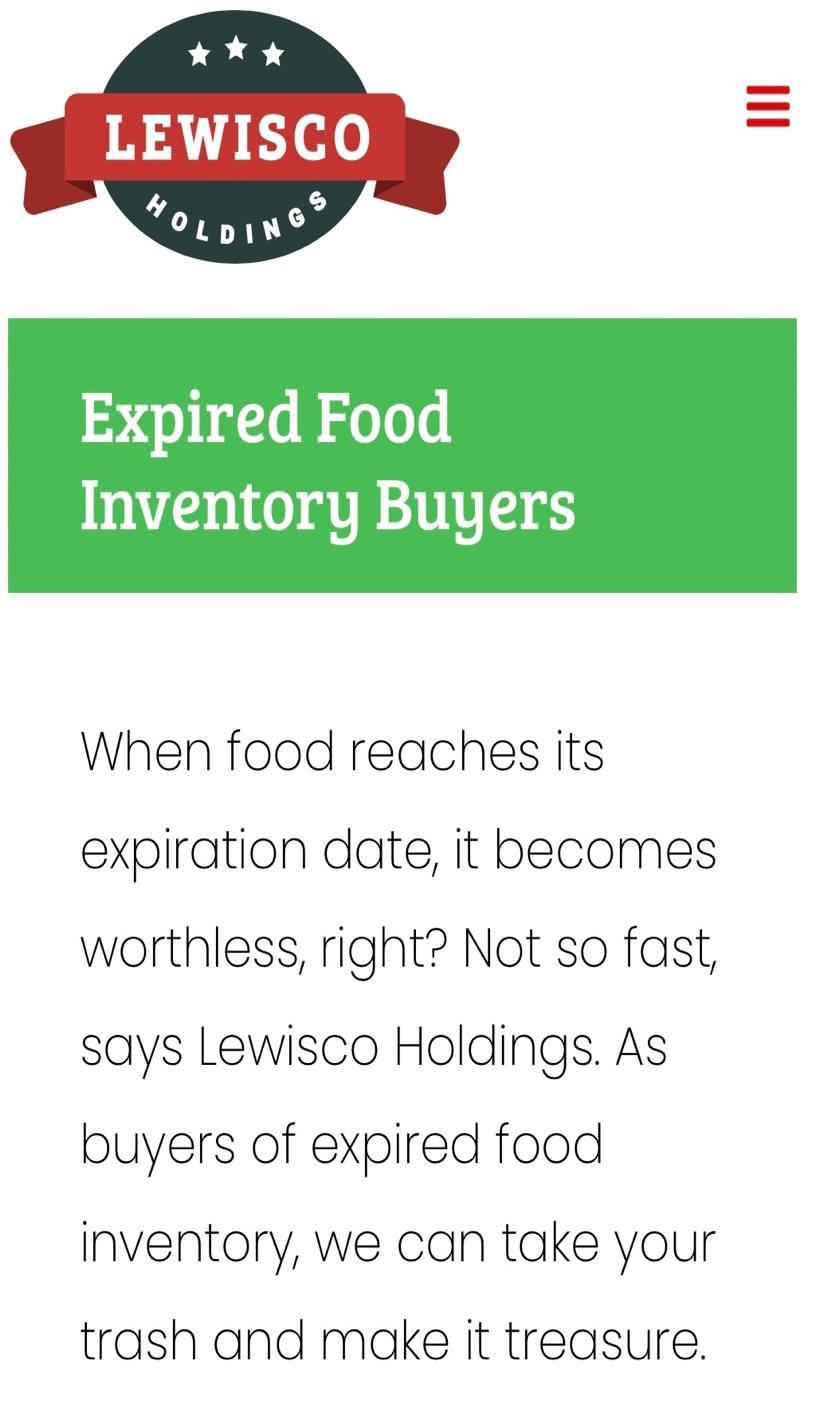
Natural Choice Foods
“As one of the few companies nationally—in the secondary market—to gain FDA and USDA certification [according to the FDA and USDA media spokespersons, certifications do not exist] in repacking food products, Natural Choice Foods is the partner you can trust to safely repack your products into private label packaging, eliminating any risk to your brand. In our recently expanded certified repack facility, our trained staff safely repacks fresh and frozen food products for our customers. We have the capacity to repack over 1 million pounds of food per month.”
“How can you offer a variety of menu options and keep food costs low? Well, the answer is Natural Choice Foods. We buy overstock food items from food companies all across the country. We buy it, warehouse it safely, repack it for food service or retail and resell it to foodservice programs at colleges, nursing homes, correctional facilities, and restaurants.
Food Items We Provide
- Low cost, high-quality proteins like chicken, beef, and pork
- Frozen appetizers and desserts
- Dry storage food items”
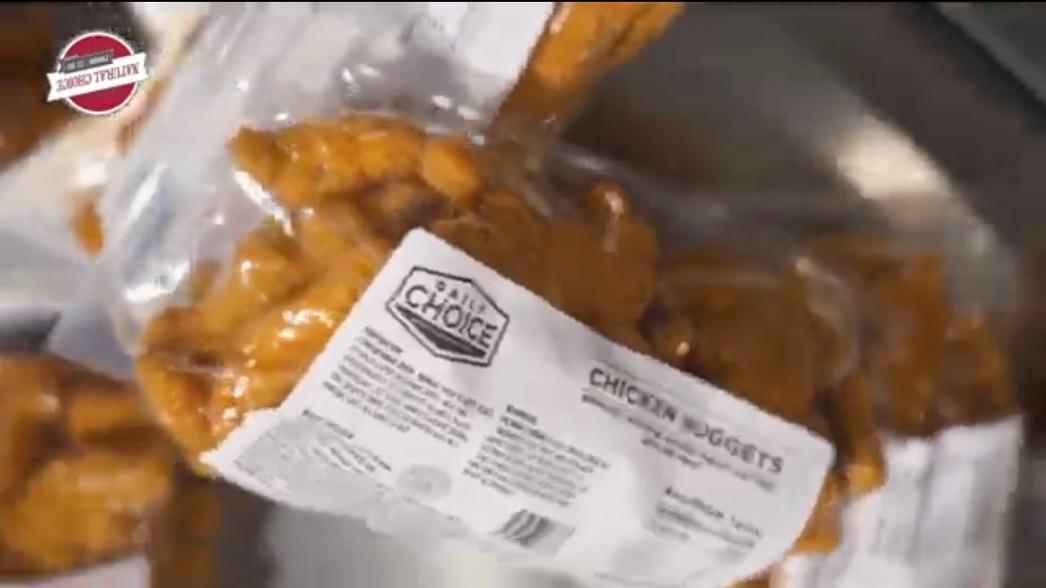
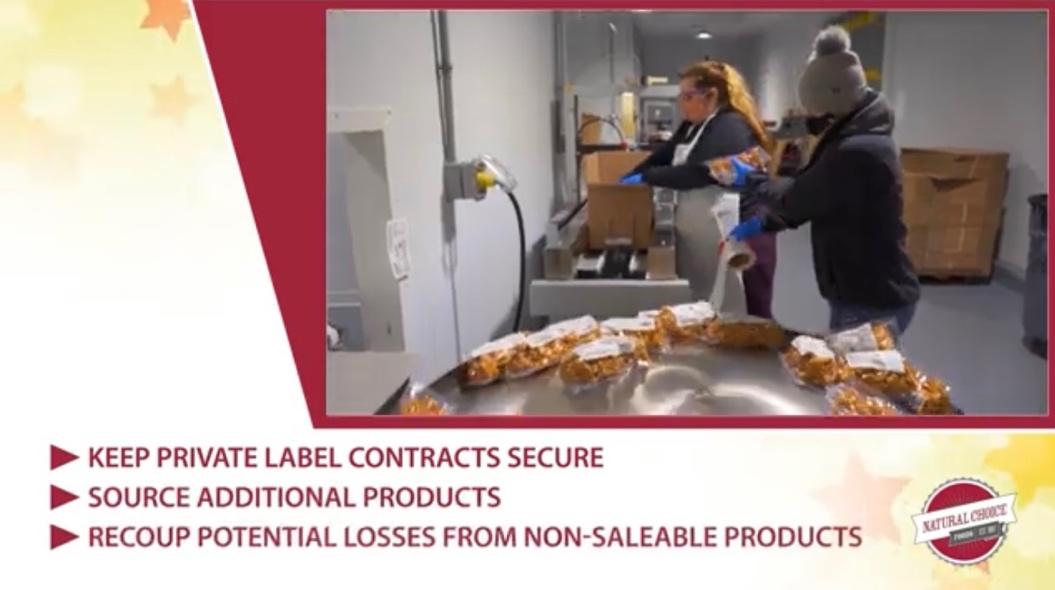

Conclusion
As established by the United Nations, the provision of “wholesome food” is a human right. Therefore, it should be served not only to prisoners but to school children, hospital patients, military personnel, restaurant patrons, and discount shoppers. Food not fit for human consumption must be removed from the marketplace.
Public institutions, private food businesses and the regulatory authorities that oversee them must be answerable to elected officials, the press and taxpayers. To achieve transparency, line-item budgets, comparative performance metrics, and bid tabulation results for the lowest three bidders on publicly funded contracts should be posted on agency websites. Besides limiting corruption and upholding human rights, public scrutiny makes government, administrators and politicians accountable and, ultimately, results in efficiency, effectiveness and cost savings. Food safety and good government are not partisan issues.
- Editor’s Note: CovertAction Magazine has removed any reference to Marvel Foods from the original. Apart from citing their own text regarding the subject, CAM does not have any proof that it is associated with any nefarious practices.

CovertAction Magazine is made possible by subscriptions, orders and donations from readers like you.
Blow the Whistle on U.S. Imperialism
Click the whistle and donate
When you donate to CovertAction Magazine, you are supporting investigative journalism. Your contributions go directly to supporting the development, production, editing, and dissemination of the Magazine.
CovertAction Magazine does not receive corporate or government sponsorship. Yet, we hold a steadfast commitment to providing compensation for writers, editorial and technical support. Your support helps facilitate this compensation as well as increase the caliber of this work.
Please make a donation by clicking on the donate logo above and enter the amount and your credit or debit card information.
CovertAction Institute, Inc. (CAI) is a 501(c)(3) non-profit organization and your gift is tax-deductible for federal income purposes. CAI’s tax-exempt ID number is 87-2461683.
We sincerely thank you for your support.
Disclaimer: The contents of this article are the sole responsibility of the author(s). CovertAction Institute, Inc. (CAI), including its Board of Directors (BD), Editorial Board (EB), Advisory Board (AB), staff, volunteers and its projects (including CovertAction Magazine) are not responsible for any inaccurate or incorrect statement in this article. This article also does not necessarily represent the views the BD, the EB, the AB, staff, volunteers, or any members of its projects.
Differing viewpoints: CAM publishes articles with differing viewpoints in an effort to nurture vibrant debate and thoughtful critical analysis. Feel free to comment on the articles in the comment section and/or send your letters to the Editors, which we will publish in the Letters column.
Copyrighted Material: This web site may contain copyrighted material the use of which has not always been specifically authorized by the copyright owner. As a not-for-profit charitable organization incorporated in the State of New York, we are making such material available in an effort to advance the understanding of humanity’s problems and hopefully to help find solutions for those problems. We believe this constitutes a ‘fair use’ of any such copyrighted material as provided for in section 107 of the US Copyright Law. You can read more about ‘fair use’ and US Copyright Law at the Legal Information Institute of Cornell Law School.
Republishing: CovertAction Magazine (CAM) grants permission to cross-post CAM articles on not-for-profit community internet sites as long as the source is acknowledged together with a hyperlink to the original CovertAction Magazine article. Also, kindly let us know at info@CovertActionMagazine.com. For publication of CAM articles in print or other forms including commercial internet sites, contact: info@CovertActionMagazine.com.
By using this site, you agree to these terms above.
About the Author
Lauren Smith is CAM’s correspondent on location. Lauren’s work has been published by the Alliance for Global Justice, Black Agenda Report, Common Dreams, Counterpunch, Global Research, Monthly Review, and Telesur amongst others.
She holds a BA in Politics, Economics, and Society from SUNY at Old Westbury and an MPA in International Development Administration from New York University.
Ms. Smith is also a member of the Green Party and Sanctionskill.org.











[…] Lauren Smith, published on Covert Action Magazine, December 6, […]
[…] 原文:Lauren Smith CovertAction 杂志 […]
[…] Black Market in Broad Daylight, by Lauren Smith […]
Dear Keaton,
Thanks for your support!
This is a great opportunity for composting. Especially since there is a contrived lack of fertilizer that is comprised of toxic industrial byproducts/waste.
Best,
Lauren
Another problem is that large grocery stores often throw away food that is still edible and still contain an abundance of nutrition. For example thousands of bananas that look bad on the outside are discarded, but when you peel these bananas many of them are excellent on the inside. So a lot of good food is being wasted and thrown away.
This is an excellent well written article. My comment may be off topic. Throwing food away can also cause problems. Rotting food produces methane gas 20-50 times more harmful than carbon dioxide. Food waste produce 70 billion tonnes of greenhouse gases per year. That is 8% of total global emissions. So steps to reduce food waste may also be useful. But perhaps I am going off topic.